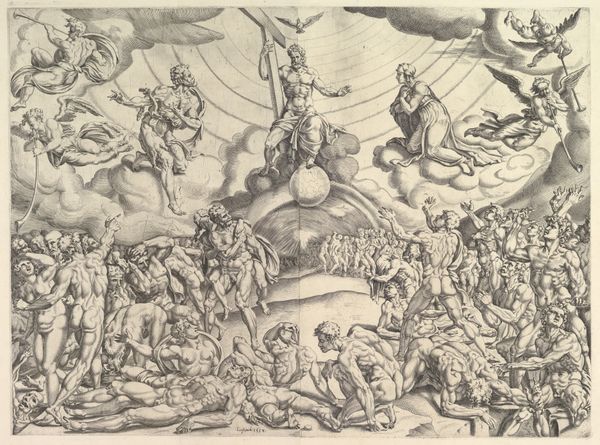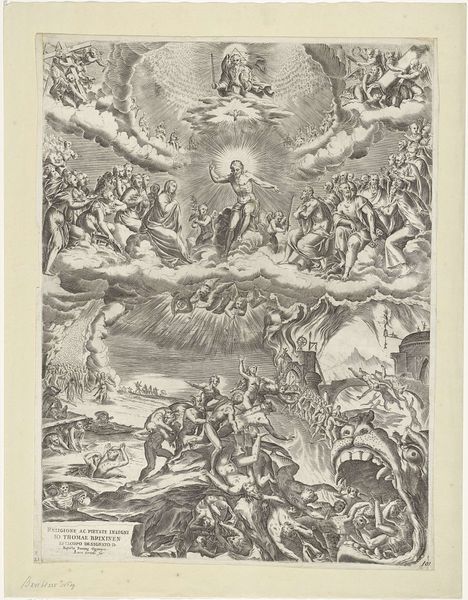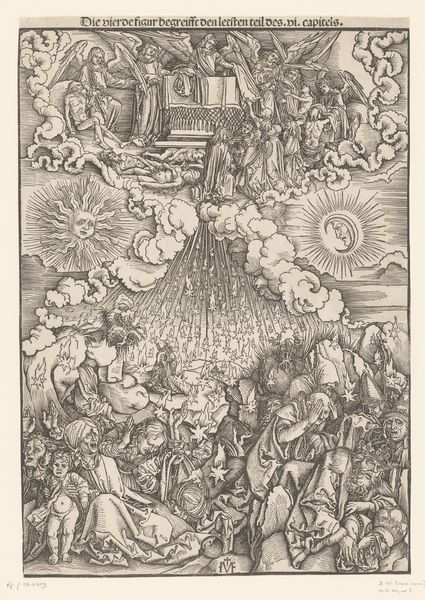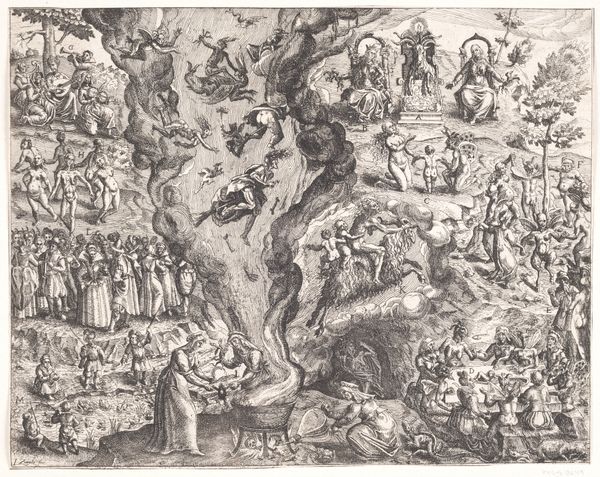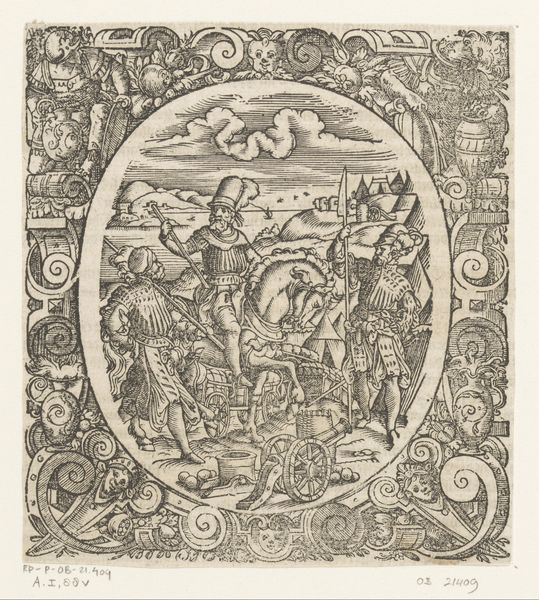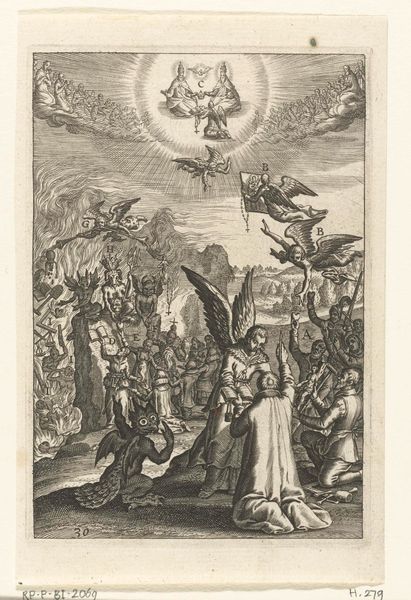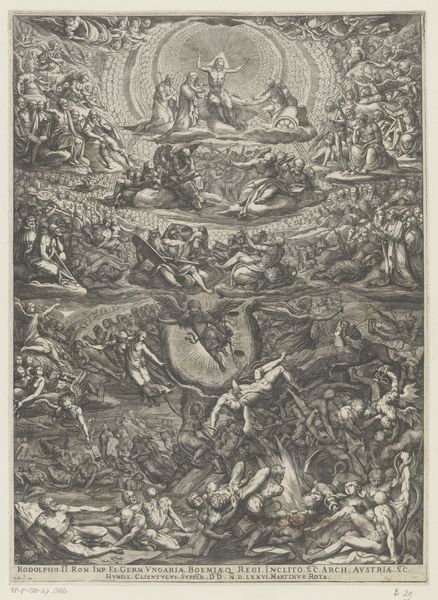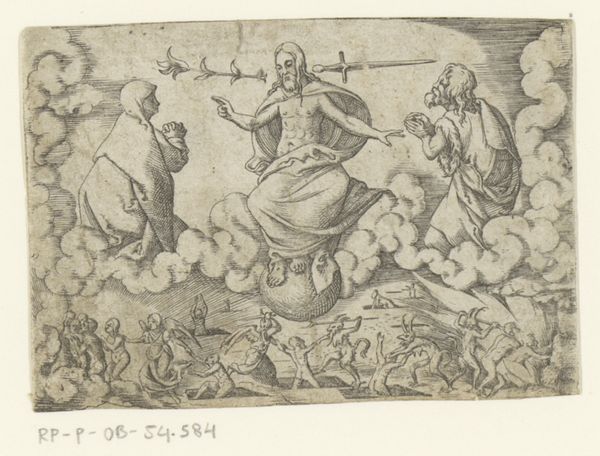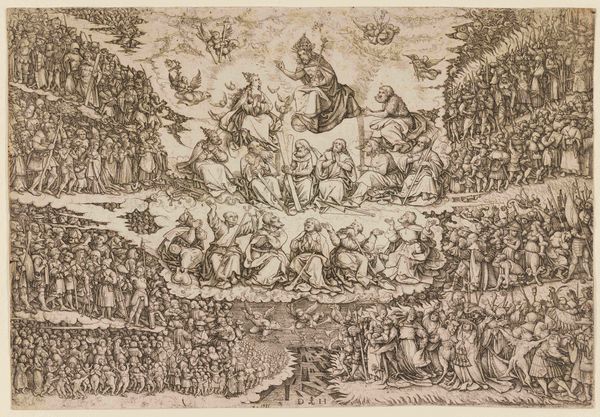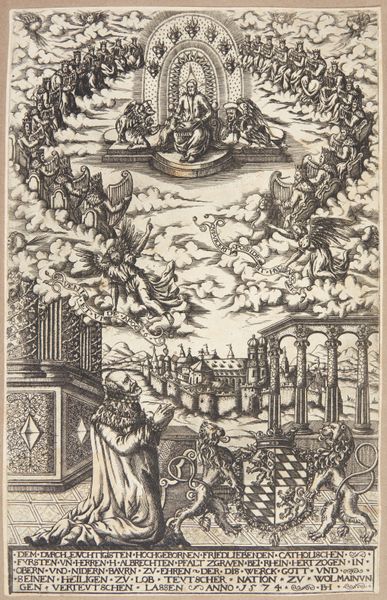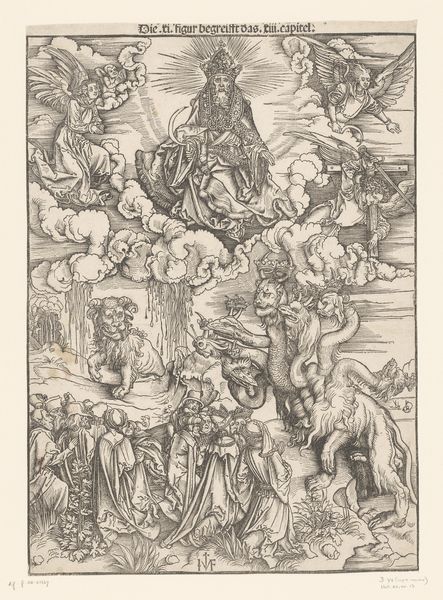
print, ink, engraving
#
medieval
#
allegory
#
narrative-art
#
pen drawing
# print
#
old engraving style
#
figuration
#
ink line art
#
11_renaissance
#
ink
#
line
#
history-painting
#
engraving
Dimensions: height 245 mm, width 350 mm
Copyright: Rijks Museum: Open Domain
Curator: This print, entitled "Laatste Oordeel", or "The Last Judgement," was created sometime between 1520 and 1580. The piece is an engraving, crafted with ink on paper. It's anonymous, which speaks to the collaborative and sometimes unattributed nature of artistic production during the Renaissance. Editor: The sheer density of figures immediately strikes me. It’s chaotic, energetic—a feeling of tumbling, panicked movement towards… what, exactly? Is it salvation, or something else entirely? Curator: "Last Judgement" prints were, indeed, often allegories, visualizations of the consequences of sin and righteousness. This image certainly embodies a medieval fascination with the narrative of morality. Consider the sociopolitical anxiety of the time reflected in the composition’s visual hierarchies and the bodies depicted. Editor: Absolutely. Look at how Heaven and Hell are differentiated not only by location—above and below—but also by the emotional tenor. Serenity versus turmoil. Even the light differs; celestial glow above contrasts with the shadows creeping up from the underworld. Curator: Note, too, how the printmaking medium itself allowed for wider distribution. Images like this held a certain cultural weight; circulating across societal strata as reminders of the Church's and societal doctrines. Editor: You can see how specific visual symbols persist in Christian art. Consider Christ's central position. Note also that traditional mandorla surrounding Him with light signifying divine radiance; beneath Him the rainbow arch symbolizing covenant and hope. This kind of artistic lineage really highlights how visual languages evolve. Curator: How would this narrative affect marginalized genders and communities of color throughout European society in the Early Modern era? And what type of societal behaviors was promoted as virtuous in relation to specific populations? These are pertinent points in exploring the continued effects of art that seeks to create a standard of ideal or sinful humanity. Editor: These visual reminders likely spurred feelings of penitence, even terror. Understanding these images helps decode a significant chapter in Western cultural memory, showing us how powerfully art once served as an arm of cultural reinforcement and social power. Curator: Examining how such visual culture intersects with gender and race offers us necessary insights for a contemporary reassessment of its influence and the systemic issues it further established. Editor: Looking closely reveals how lasting motifs can evolve. Studying older symbols through today's lens is a powerful tool. Curator: A productive reassessment of historical narratives like these and the value structures they reflect helps us rethink not only the artwork, but broader culture, and our place in it.
Comments
No comments
Be the first to comment and join the conversation on the ultimate creative platform.
